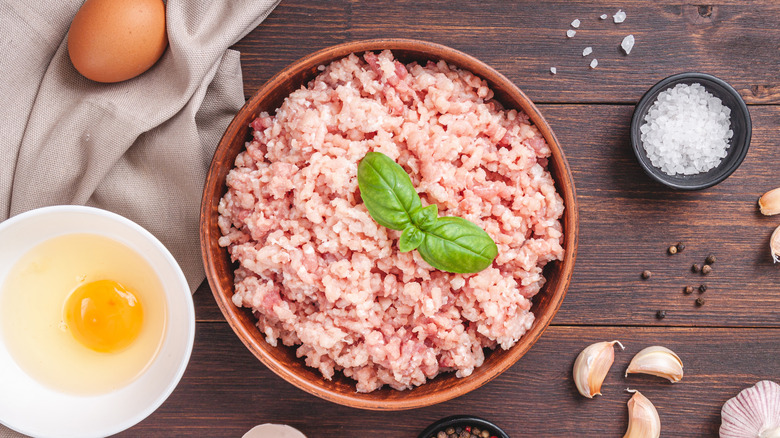Why You Might Want To Think Twice Before Buying Ground Chicken On Your Next Trip To The Grocery Store
Fans of ground chicken may want to consider another type of protein for a while. A new study by Consumer Reports found that almost 30 percent of ground chicken may contain salmonella. The company tested 75 samples of ground chicken and found the same amount of risk among major brands, organic, and non-organic products. James Rogers, the director of food safety research and testing at Consumer Reports, called on the U.S. Department of Agriculture (USDA) to put more effort into protecting consumers from dangerous bacteria like salmonella.
"The USDA has pledged to reduce illness from salmonella contamination for more than a decade, but [Consumer Reports'] tests show that more progress is clearly needed to protect the public," said Rogers. "We need tougher action by the USDA to keep salmonella out of our kitchens and off of our plates." Researchers also found that all of the salmonella found in the ground chicken was resistant to at least one antibiotic, which could make an infection even more difficult to treat.
How to avoid foodborne illnesses
While some raw foods have a greater risk of harboring bacteria than others, there are several universal steps you can take to ensure you don't get sick. According to the U.S. Department of Agriculture, there are four steps you should take to make sure your food is safe: clean, separate, cook, and chill. First, clean all surfaces and utensils that will come into contact with food. Wash these items, and your hands, with hot, soapy water, and make sure to scrub any cutting boards or countertops that have been in contact with raw meat, poultry, or seafood. Next, separate raw meat, poultry, and seafood from other food. This includes keeping these items separate when shopping, storing them in your refrigerator or freezer, and cooking them on a separate surface.
Then, cook food to the right temperature. Use a food thermometer to make sure meat, poultry, and seafood are cooked to a safe internal temperature. Finally, chill food promptly. Bacteria can grow quickly at warm temperatures, so it's important to refrigerate or freeze perishable food within two hours of cooking or buying it. If the ambient temperature is above 90 degrees Fahrenheit, you should refrigerate or freeze perishable food within one hour. By following these four simple steps, you can help avoid getting sick from foodborne illnesses.


